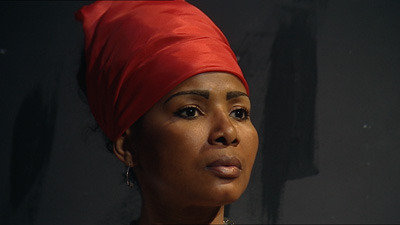Peter Friedl
dal 10/1/2011 al 25/2/2011
Segnalato da
Nicolas Krupp Contemporary Art
10/1/2011
Peter Friedl
Nicolas Krupp, Basel
Peter Friedl's recent works deal with the political historicity of images, exploring and conjuring up their narrative potential in a paradoxical form that takes the shape of a documentary allegory. On display the video Bilbao Song (2010), The Children (2009), Tiger oder Lowe (2000).

Images can tell stories in different ways. But what images does history leave behind, and
how much history do they contain? Peter Friedl’s recent works deal with the political
historicity of images, exploring and conjuring up their narrative potential in a paradoxical
form that takes the shape of a documentary allegory.
Bilbao Song (2010) was filmed on the empty stage of the Serantes Theatre in Santurtzi, near
Bilbao. In static tableaux vivants staged specially for the camera, Friedl’s film captures the
process of a phantasmagorical picture production, in this case inspired by Basque history. Those
involved in these tableaux included professional actors and special guests, like Julen Madariaga
(lawyer, politician, former co-founder of ETA) or the popular clown duo Pirritx and Porrotx.
The starting point was the painting Henry IV and the Spanish Ambassador (1817) by Jean
Auguste Dominique Ingres. Other references to Basque history are El Paria Castellano by Juan
de Echevarria (1917), El Orden by Gustavo de Maeztu (1918–19), the Tríptico de la Guerra by
Aurelio Arteta (1937), and Soldado y Mulata by Víctor Patricio Landaluze, who was born in
Bilbao and migrated to Cuba in 1850. The only action that takes place on the stage is the live
interpretation of the “Bilbao Song” from Happy End, an unsuccessful musical comedy by
Bertolt Brecht and Kurt Weill—a performance with no text, just a pianist and a woman
accordion player.
The video The Children (2009) is based on the painting Fëmijët (1966) by Albanian painter Spiro
Kristo. His street scene with children, painted in the propaganda style of Socialist Realism, was
recreated and then filmed in Tirana, in a room at the Hotel Dajti, which was designed by an
Italian architect during the Fascist occupation. In the voice-over, one of the girls says in
Albanian: “The picture has to step out from the frame.” Francisco Pacheco, official censor of
Seville’s Inquisition and author of Arte de la pintura, gave this advice to his pupil Diego
Velázquez. Foucault quoted it in his famous “Las Meninas” essay, which was to become the first
chapter of Les mots et les choses (1966).
In the older work Tiger oder Löwe (2000) the realism problem gives rise to a small drama
loop. In a room in the Hamburg Kunsthalle, Friedl staged the struggle between a real tiger
and a cloth snake, freely adapted from the small painting by Eugène Delacroix, which is part
of the Kunsthalle’s permanent collection. The painted fiction is translated into reality and
then into another picture.
Image: Peter Friedl, Bilbao Song, 2010
Video, color, sound 5:53 min., loop, Edition: 4
Opening Tuesday 11 January 2011, 6 pm
Nicolas Krupp GmbH
Contemporary Art Rosentalstrasse 28 CH-4058 Basel
Open: Thursday, Friday, Saturday: 2-6 pm and by appointment



